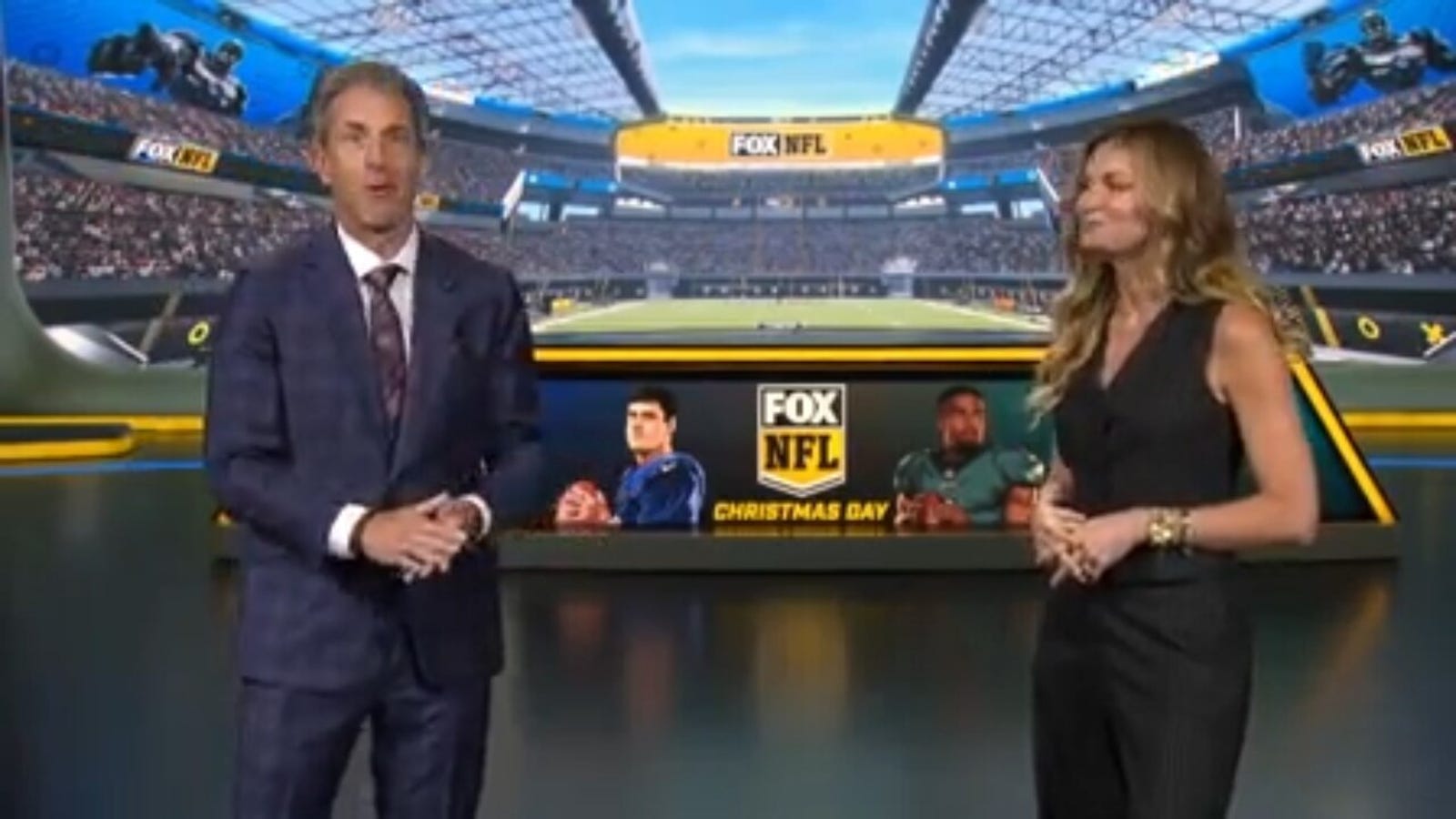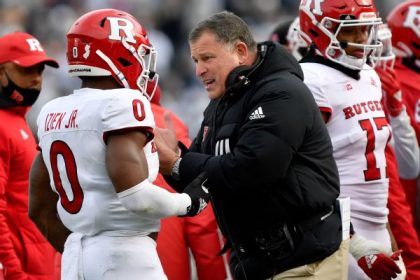Assessing strength of schedule in the NFL involves two components: The strength of a scheduled opponent and the difficulty of the scheduled timing.
We already knew who each team played this year. So, from that perspective, we knew strength of scheduled opponent, and those rankings from 1 through 32 are here.
But we didn’t know when each team was playing. So, we didn’t know the difficulty that the schedule’s timing would generate for teams.
For example: Is a team at a rest disadvantage in a game compared to their opponent? How many days do they have to prepare for their game? How many does their opponent have? Are they coming off a road game on a short week? Is their bye-week edge negated?
Strength of schedule in regard to opponents and strength of schedule in regard to timing are two completely different things, and we could only evaluate the latter once the schedule dropped.
[2023 NFL schedule release: Win-loss predictions, analysis for every team]
In order to evaluate the second factor, we look at a few variables related to rest and prep.
ADVERTISEMENT
Those include:
- Net rest edges
- More or less rest than opponent
- Opponent’s days to prepare for your game
- Short-week road games
- Games after a road Sunday night or Monday night
- Negated bye weeks
Net rest edges
Net rest is the edge in days of rest a team has by game, summed up over the course of the season.
For example, the Giants play the Patriots in Week 12. The Giants played the Commanders in Week 11. But the Patriots have a bye in Week 11, and are off an extra week of rest. Therefore, the Patriots have seven days of extra rest compared to the Giants. Accordingly, in Week 12, the Patriots have a rest edge of +7 while the Giants have a rest edge of -7. Sum these edges up over the course of the season, and you get a team’s Net rest edge for the season.
Last year, there were three teams with net rest edges of -9 or worse over the course of the season: Packers (-12), Patriots (-10) and Texans (-10). All fell below their projected win totals. The Packers were projected to win 11 games and finish second in the NFC. They won only eight games. Both the Patriots and Texans fell below their win totals as well.

Meanwhile, the two teams with the best net rest edges last year (Bills at +12 and Lions at +11) both smashed the over in their win totals. The Bills had a game not count due to the Damar Hamlin injury, but still won 13 games to exceed their win total. The Lions were projected to win only 6.5 games before the season but won nine games and nearly made the playoffs.
It’s not always the total rest that matters. It can also be games with a rest advantage that matters. Having a rest edge does not mean you’re easily going to win a game, nor does rest disadvantage mean you’re going to lose. But it’s a factor, and it matters to teams. Particularly when we’re talking about a three-plus-day rest edge.
This graphic shows the net rest edge for each team this season. Each block is a single game where one team has a rest advantage or disadvantage.
You can see how important this is when you study the haves and have nots.
The Jets are at +12 while the 49ers are at -20. That’s a 32-day swing in rest edge. To put that in perspective: in a sport that spans four months from start to finish, one team has over a month more days of rest edges than another. That is hard to overcome.
And it’s the widest gap we’ve seen in recent memory. Last year, the straddle between the two teams at polar opposites was 24 days (Bills at +12, Packers at -12).
32 days is wild.
More (or less) rest than opponent
In addition to total net rest, let’s now expand by simply looking at the number of games with more rest than an opponent.
In 2022, only one team played five games with more rest than their opponent. It was the Cowboys, who used those rest benefits to deliver a surprisingly solid season and exceed their 10-win projected total by winning 12 games.
This year, an incredible five teams play five or more games with more rest than their opponent, up from one in 2022: Raiders (6), Jets (5), Lions (5), Packers (5) and Commanders (5).
Meanwhile, the Falcons play zero games with more rest than their opponent. In 2022, every team was given at least one game where they had more rest, but that is not the case in 2023.
Looking deeper at the Raiders: they play six games against teams who are coming off Monday Night Football games.
I looked back since 2000 and can’t find a team that played more than that opponents in one season who were coming off a Monday Night Football game.
But in 2023, the Raiders play double that total. And in each game, they have the rest advantage over their opponent.
In terms of “net” games with rest edges, we also are in territory far from what we saw in 2022.
In 2022, we saw 22 of the 32 teams have “net” games with rest edges between +1 games and -1 games.
In 2023, that number is only 13 teams.
In 2022, we saw the following counts of teams with detrimental net games with rest edges:
Two teams with -3 “net” games with rest edges
Three teams with -2 “net” games with rest edges
In 2023, those numbers have grown to:
Two teams with -4 “net” games with rest edges (Eagles and Chiefs)
Three teams with -3 “net” games with rest edges (49ers, Falcons and Rams)
Four teams with -2 “net” games with rest edges (Giants, Vikings, Bengals and Buccaneers)
Thus, we see teams like the Eagles and Chiefs (last year’s Super Bowl participants) at -4 games, while the Commanders are at +4 games, marking an eight-game swing from best to worst in a 17-game season.
Opponent’s days to prepare for your game
If the league standard is a game every seven days, with six days of rest in between, how often does an opponent have more than standard rest to prepare to face their opponent?
Last season, only the Jets had to play six games where their opponent had extra time to prepare for them.
Unfortunately, this year there are now four teams who have to play six or more games with opponents on extra rest: the 49ers (7 games), the Giants (6 games), the Chiefs (6 games) and the Chargers (6 games).
What must be frustrating for these teams is when they notice that there are six teams who play just one game against a team who has extra time to prepare for them: Jets, Ravens, Bears, Titans, Cardinals and Browns.
We can also look at the opposite, which is the number of games a team plays where their opponent is on shorter than standard rest. Then we can compare that with the games played against an opponent off of extra rest to calculate the net.
The 49ers, for example, face only two teams who are on short rest, but seven teams who are on extended rest. Thus, a net of -5 games for the 49ers.
This season, we have six teams who have a net of -4 games or worse: 49ers (-5), Giants (-4), Chiefs (-4), Falcons (-4), Chargers (-4) and Eagles (-4). Last season, there were only 3 teams with a net of -4 and none worse. We’ve doubled the 2022 total (3) with the 2023 schedule (6).
Short-week road games
The NFL did a better job this year compared to 2022 with its attempt to reduce short-week road games.
These are the worst type of games to have to play. Less time for coaches to prep, less time for players to heal and get healthy, less time to install a game plan. Less of all of that than your opponent, because you also have to travel to the game.
In 2022, there were five teams who had to play at least 3 of their 17 games on short weeks on the road. This season, only three teams must endure this disadvantage in three of their games: the Giants, Bengals and Jets.
What is challenging for a team like the Giants is they must play three such short week road games, while their counterparts in the NFC East, like the Cowboys and Eagles, don’t have to play a single such game.
There are 38-total short-week road games this year, so an average of 1.2 per team over the 18-week season.
As you probably would guess, teams in this situation do far worse than average, although the better-coached and deeper teams will perform better.
Since 2015, teams playing on the road on a short week win only 45% of their games. But that includes the 2020 season, in which no crowds were allowed into games and road teams in this situation won 59% of games. Excluding 2020, since 2015 these teams are 104-135 (.435) and have covered the spread in 48% of games. If these teams are the perceived worse team in their matchup (underdogs) they are a mere 42% ATS in the 150-game sample.
In 2022, there were six teams with three or more short-week road games. Fortunately, that number is down to only three in 2023, which is good news overall, unless you are one of the teams negatively impacted.
Games after playing on road Sunday night or Monday night
Teams hate when they have to travel home and arrive in the wee hours of Monday or Tuesday morning. It throws a wrench in their week of prep.
In 2022, the only teams to play three such games over the course of the season were the prior Super Bowl teams (Rams and Bengals). The same is true in 2023, as the Chiefs and Eagles both play three such games.
Teams off road Sunday night or Monday night games without getting extra rest have covered just 47% of games since 2015.
The NFL did a better job this year of spreading out the disadvantage of these games. In 2022, 16 teams didn’t have to play a single road game off Sunday night or Monday night. But in 2023, that number is down to only 10 teams. Fewer teams play multiple such games in 2023, and this is all we can hope for: spreading out the advantages or disadvantages to increase the equality among teams.
Teams with two or more of these disadvantageous games this year: the Chiefs, Eagles, Bills, Packers, Dolphins, Ravens and Cowboys.
Negated bye weeks
The two benefits a bye should theoretically give are extra time to rest and prep for your team, and a game with a nice rest edge over your opponent. This makes an abridged bye week very damaging.
This year, 11 teams have their bye week negated. This doesn’t “hurt” the team, because they still get their rest and prep. But it doesn’t “help” the team, as they don’t have a rest or prep advantage over their opponent.
Those 11 teams: 49ers, Chiefs, Eagles, Vikings, Panthers, Jaguars, Falcons, Packers, Saints, Raiders and Texans.
Some teams have seen their bye week negated for three consecutive years. The Vikings are going on three straight years with a negated bye. This year, their bye is Week 13 and the following week they play the Raiders. But the Raiders will likewise be coming off their bye.
Teams who have seen their bye week negated for two straight years: Falcons, Packers, Saints, Raiders and Texans.
Meanwhile, half the league (16 teams) has enjoyed the full benefit of a bye week for two straight years.
Summary
Below is a graphic that totals all the games for all the teams in the conditions discussed above and ranks their prep and rest edge for 2023. I’ve also included the ranking for 2022 and the prior decade.

The teams hurt most in 2023 by the scheduled timing of games based on these variables?
The Chiefs, 49ers, Eagles, Vikings and Giants.
We should also include the Rams and Falcons, as both have brutal net-rest situations.
The teams helped most in 2023?
The Colts, Commanders, Browns, Cardinals and Titans.
And we should also include the Jets and Bears, as both have tremendous net-rest situations.
Several of these teams mentioned rank at the top or bottom of net rest, but others have unique schedule quirks that help them exceed pure net rest edges.
In 2021, we saw 85 games played with a rest disparity between teams. In 2022 that rose to 93 games. This year, it has increased to 95 games.
We have a team totaling 28 days of rest disadvantage (most in several years) while another team has zero games with a rest disadvantage. We have a team totaling 17 days rest advantage (most in several years) while another team plays zero games with a rest advantage. The total straddle has increased by 45% compared to last year.
One element of setting expectations for the season is understanding advantages certain teams have. As much as we would like it if there was a completely level playing field, that is simply not the case when there are so few games played in a season and a key desire is getting compelling matchups on national TV.
Thus, understanding which teams have advantages when it comes to rest and prep elements is extremely useful and certainly should be one part of the process when predicting how the 2023 season will unfold, both on a seasonal basis as well as a weekly basis throughout the season.
Warren Sharp is an NFL analyst for FOX Sports. He is the founder of Sharp Football Analysis and has worked as a consultant for league franchises while also previously contributing to ESPN and The Ringer, among other outlets. He studied engineering and worked professionally in the engineering field before using his statistical acumen to create predictive football models. You can follow Warren on Twitter at @SharpFootball.
NFL trending

Get more from National Football League Follow your favorites to get information about games, news and more











